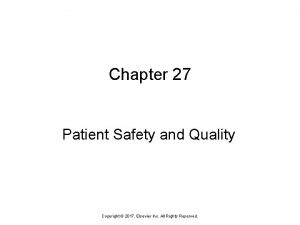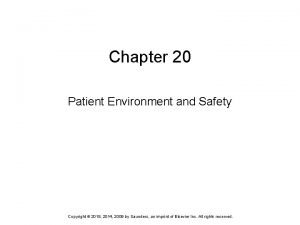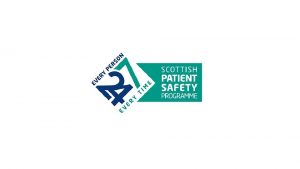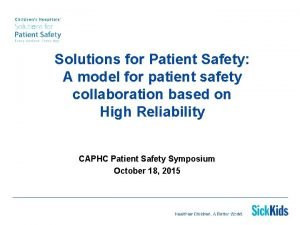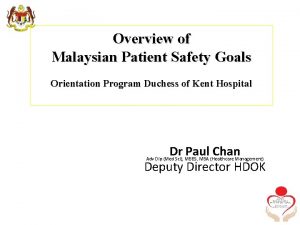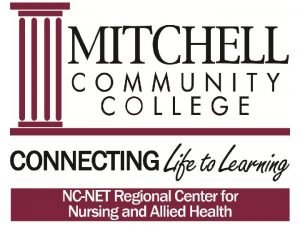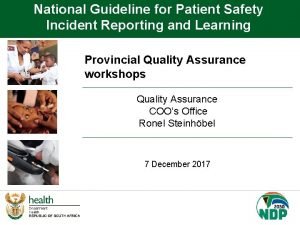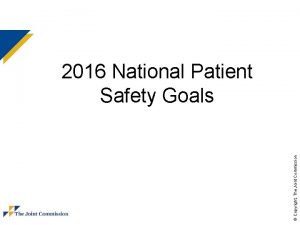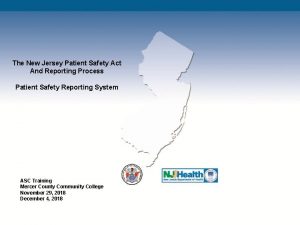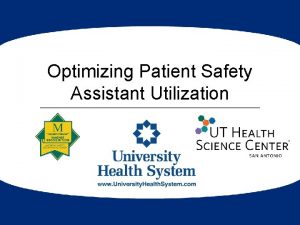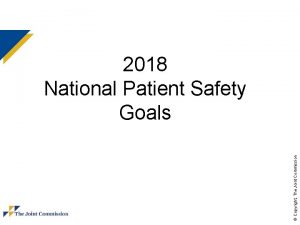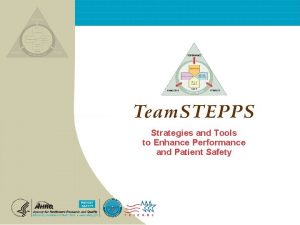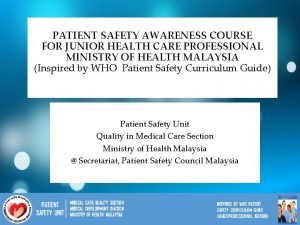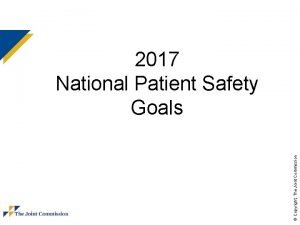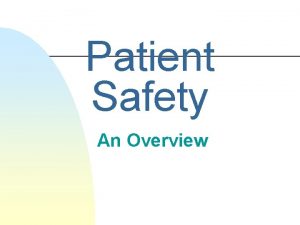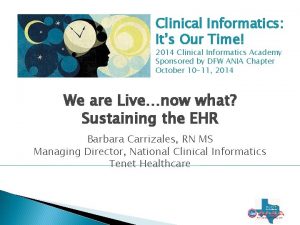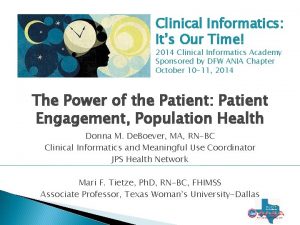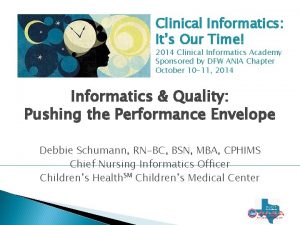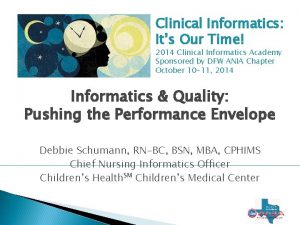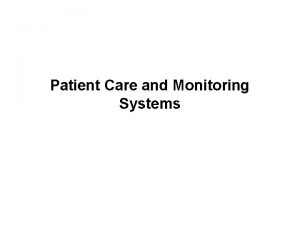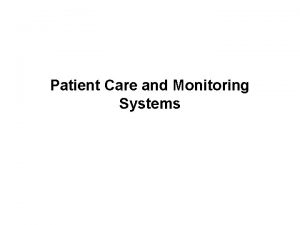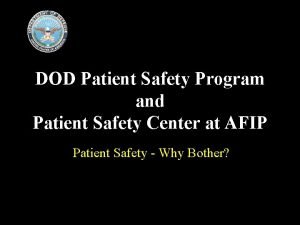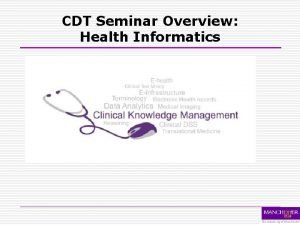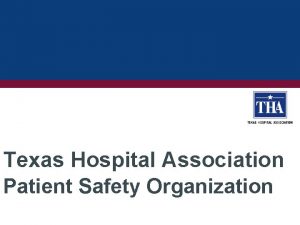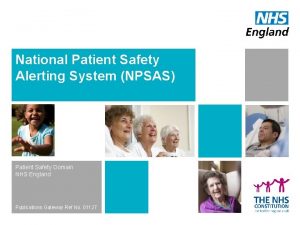Patient Safety and Clinical Informatics A Systems Approach






















- Slides: 22

Patient Safety and Clinical Informatics : A Systems Approach Karen Garvey MPA/HCA, BSN, DFASHRM, CPPS Tsedey Melaku MS, BSN, RN

Objectives • Explain daily executive safety huddle process and the role of informatics and IT. • Review a case study on how projects originate from the review of safety events • Review a case study on the unintended consequences of technology and how a systems approach can reduce the risk 2

3

Daily Executive Huddle • Objectives: – Escalation pathway for concerns operational concerns & safety issues • Timeframe: – – – Daily (0800); weekends and holidays 5 -15 minute call Standard agenda Daily Report on necessary follow-up Loop Closure follow-up • Attendees: – Executive Leadership – Guests/Celebrations: • Huddle Board metrics 4

Executive Huddle Board

Review of Safety Events • Unplanned ‘Tap & Go’ Outage – Several calls related to inability to log into desktops – Issue with ‘certificate’ – Contract Management • IT cardiac build project: – Programming build – Syntax error: use of comma (, ) vs. up carrot (“^”) – Caused image delay routing (Urology) • 741 images impacted • Temporary Serious Harm to one patient • Disclosure & continued treatment 6

TJC Root Causes 7

IT related to Safety: Radiology Imaging Surveillance Adverse Event born out of RCA FMEA Enterprise-wide project Phase II underway 8

Patient Safety & Healthcare IT • A newly formed collaborative relationship – Mutual appreciations – Differing skill sets; common purpose • Reciprocal IT Services ‘Root Cause’ attendance – Incorporated into systemwide ‘Root Cause’ policy • Working together to improve patient care 10

Review of Safety Events • Multiple RCA/event reports related to patient controlled analgesia (PCA) errors • Causal analysis of PCA misprogramming completed by Safety Department • Interprofessional workgroup formed to review the workflow for ordering, administering, and documenting PCA medications 11

PCA Documentation & Workflow Analysis • PCA medication administration and waste documentation was cumbersome and difficult to understand. • The PCA documentation build was designed to capture cumulative totals and waste documentation. • Parkland specific custom build was used in order to meet the request from stakeholders. 12

PCA Dosing Information 13

PCA Dosing Information 14

EHR Usability Aspects https: //www. himss. org/what-ehr-usability 15

PCA Documentation Analysis 16

EHR Usability Aspects used to Redesign Process 17

Forgiveness & Feedback 18

Minimizing Cognitive Load When PCA syringes are scanned, the total amount of the syringe is automatically entered in the “Dose” field and is documented as a bolus in the flowsheet. • • To avoid this erroneous documentation, you must delete the 2 dose fields on the MAR so that they are both blank before you sign-off. 19

ECRI Recommendations to Reduce Pump Programming Errors • Factors that can contribute to wrong-field programming errors include the layout of an infusion pump’s programming screen, the sequence in which infusion programming parameters are listed on the medication administration record (MAR), and the absence of procedures to verify the accuracy of pump programming. • Other recommendations include configuring your MAR to match the sequence in which infusion parameters will be entered into the pump and instituting appropriate double-checks to verify pump programming. © 2018 ECRI Institute. 2019 Top 10 Health Technology Hazards: Executive Brief 20

PCA Ordering & Documentation Redesign 21

PCA Ordering & Documentation Redesign • The PCA medication build was modified to include discrete dosing for loading dose, patient bolus dose, lockout interval, basal rate, and four hour dose limit. • Utilized ECRI Institute recommendations and HIMSS (Health Information Management Systems Society) EHR usability guidelines to redesign the PCA ordering and documentation workflows. 22

References • ECRI Institute 2019 Top 10 Health Technology Hazards: Solutions Kit (published 09/26/2018) • https: //www. himss. org/what-ehr-usability 23
 Poc informatics systems
Poc informatics systems Patient 2 patient
Patient 2 patient A nurse floats to a busy surgical unit
A nurse floats to a busy surgical unit Chapter 20 patient environment and safety
Chapter 20 patient environment and safety Patient safety and quality care movement
Patient safety and quality care movement Clinical systems transformation
Clinical systems transformation Essentials of safe care
Essentials of safe care Solutions for patient safety bundles
Solutions for patient safety bundles Malaysia patient safety goal
Malaysia patient safety goal National patient safety goals 2012
National patient safety goals 2012 National guideline for patient safety incident
National guideline for patient safety incident Learn from patient safety events
Learn from patient safety events National safety goals 2016
National safety goals 2016 History of patient safety
History of patient safety Nj patient safety act
Nj patient safety act Patient safety assistant
Patient safety assistant Dod patient safety program
Dod patient safety program Npsg 2018
Npsg 2018 Sue sheridan patient safety
Sue sheridan patient safety 13 malaysian patient safety goals
13 malaysian patient safety goals National patient safety goals 2017
National patient safety goals 2017 Patient safe solutions
Patient safe solutions Solutions for patient safety bundles
Solutions for patient safety bundles


